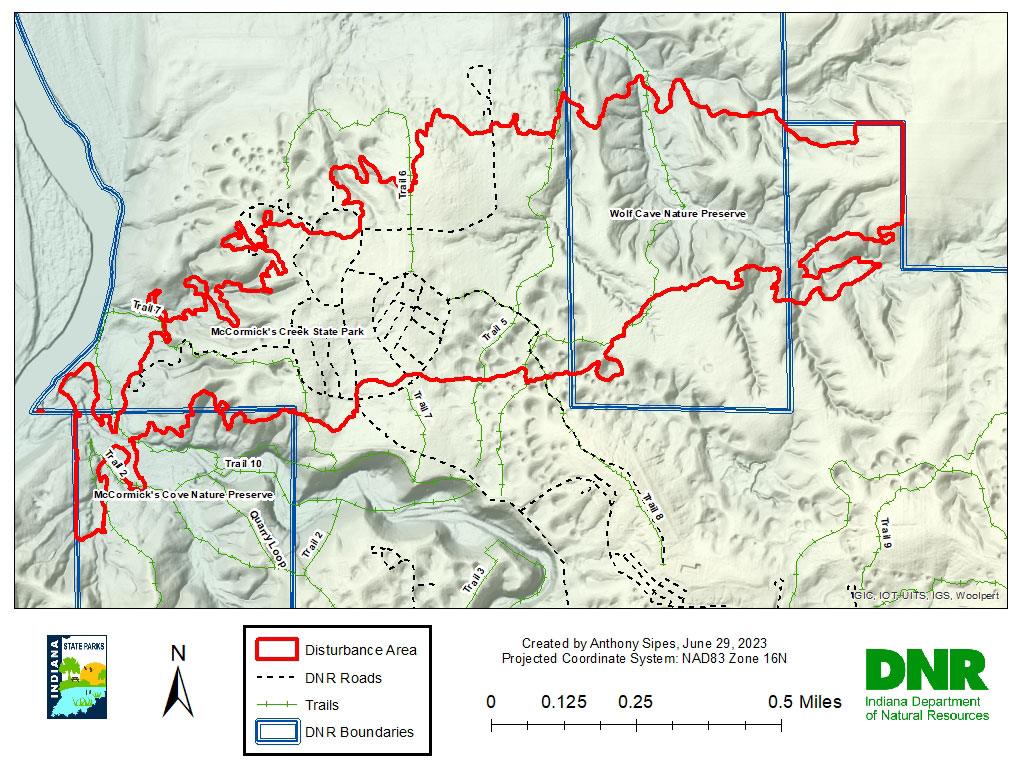Recovery
July 2024
Recovery
January 2024
November 2023
Damage
FAQs
- How much of the park was impacted?
Approximately 282 acres of the 1,961-acre park were seriously impacted. The actual path of the tornado was approximately 400 yards wide at its widest, or about the width of 4 football fields.
The tornado followed a path from the southwestern boundary of the park near the White River to the northeast through the edge of McCormick’s Cove Nature Preserve, directly through the campground, and across the center of Wolf Cave Nature Preserve.
It is estimated that the actual time it took for the tornado to pass through was 30 – 40 seconds. With wind speeds near 150 miles per hour, thousands of trees were uprooted or knocked down, and many more were damaged beyond the point of recovery. More than 90% of the sites in Loop B and Loop A of the campground sustained irreparable damage. All three shower houses received extensive damage to their roofs, walls, and foundations and must be demolished and replaced. The primitive campground and Beech Grove Shelter received little to no damage.
Significant Storm and Tornado Canopy Disturbance Area, March 31, 2023

- What facilities are OPEN for public use?
- When will the campgrounds reopen?
- Why can’t we just walk into the campground to see the damage ourselves?
- How are the nature preserves?
- What are the impacts on wildlife?
- What are the next steps for recovery?
- What will happen with all the trees and debris that are damaged and down?
- How did this salvage harvest work?
- What will happen to any funds generated by the salvage harvest?
- Will there be improvements made to the campgrounds?
- Will the DNR be planting trees to replace the trees destroyed?
- How is DNR paying for the campground restoration?
- How long will it take for the campground to look like it did before the storm?
- Were any of the park’s memorial benches damaged?
- How can I keep up with the recovery process?
- Has something like this happened before at McCormick’s Creek or other DNR properties?
- How can I help?
We also ask that you continue to support ALL of Indiana’s state park properties with your enthusiastic presence. More than 90% of our day-to-day operations are funded by the fees you pay when you visit. We are here to conserve, manage, and interpret our resources, while creating memorable experiences for everyone, and we will continue to do that across Indiana with your support and assistance!

